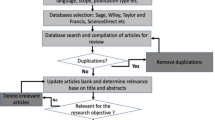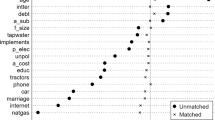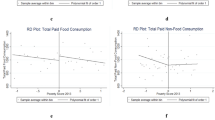Abstract
The current study analyzes the impacts of BISP’s unconditional cash transfers on beneficiary households' well-being through various indicators including consumption and poverty. The analysis is conducted by using the 2019 cross-sectional data and panel data of 5 rounds conducted during the 2011–2019 period. A Quasi-experimental approach is adopted by applying both the regression discontinuity design (RDD) and difference-in-discontinuity techniques for cross-sectional and longitudinal data, respectively. The findings reveal that despite 8-years of the intervention, three-fourths of the beneficiary households are still below the poverty line and little impact is found on the consumption expenditures in general. Overall the unconditional cash transfers remained unsuccessful in eradicating extreme poverty which was one of the major objectives of the program. The analysis suggests that BISP needs to revisit its existing design, shifting towards conditional interventions for sustainably alleviating poverty.







Source: Estimated from the BISP Impact Evaluation Survey 2013, 2016, and 2019
Similar content being viewed by others
Notes
The program was named after the former Prime Minister of Pakistan Benazir Bhutto.
Each of the members of the National Assembly and Senate was asked to recommend 8000 deserving families to 1000 to each of the members of the Provincial assemblies.
23 indicators were selected that best-predicted households' per capita consumption.
The program gives an exception from the BVS to the aged, disabled, and thumb amputee cases by providing debit cards.
The amount was raised to PKR 3600 in July 2013, PKR 4500 in July 2014, PKR 4700 in July 2015, PKR 4834 in July 2016, PKR 5000 in July 2018, and PKR 6000 in January 2020.
Data was not collected from the AJK region and the sample of the GB region is not representative at the regional level.
Some beneficiaries were having scored from 16.17 to 20 who entered the program under the appeal criteria, i.e. having a disabled member, fewer members in the home, a senior citizen, or a high dependency person in the home.
Ultra-poor is defined as the per adult equivalent consumption is up to 75% of the poverty line; poor having consumption between 75.01% to 100%; vulnerable having consumption between 100.01% to 125%; quasi non-poor having consumption between 125.01% to 200% of the poverty line and non-poor having consumption more than 200% of the poverty line.
BISP’s MIS data shows that on average sampled households have received PKR 15,251 in the last 12 months.
References
Ambler, K., & De Brauw, A. (2019). Household labor supply and social protection: evidence from Pakistan’s BISP cash transfer program (Vol. 1815): Intl Food Policy Res Inst.
Arif, G. M., & Farooq, S. (2014). Rural poverty dynamics in Pakistan: Evidence from three waves of the panel survey. The Pakistan Development Review, 53(2), 71–98.
Bank, A. D. (2012). The framework of Inclusive Growth Indicators 2012: Key Indicators for Asia and the Pacific Special Supplement: Asian Development Bank.
Bank, W. (2010). Evaluating impact: turning promises into evidence. Benazir Income Support Programme (BISP). Retrieved from
Bank, W. (2018). The state of social safety nets 2015: The World Bank.
Beegle, K., Coudouel, A., & Monsalve, E. (2018). Realizing the full potential of social safety nets in Africa: World Bank Publications.
Coady, D. P. (2004). Designing and evaluating social safety nets: Theory, evidence and policy conclusions.
Daidone, S., Davis, B., Handa, S., & Winters, P. (2018). The household and individual-level economic impacts of cash transfer programs in Sub-Saharan Africa: Synthesis report.
Davis, B., & Handa, S. (2015). How much do programmes pay? Transfer size in selected national cash transfer programmes in sub-Saharan Africa. Retrieved from
De Benedetto, M. A., & De Paola, M. (2019). Term limit extension and electoral participation. Evidence from a diff-in-discontinuities design at the local level in Italy. European Journal of Political Economy, 59, 196–211.
Dreze, J., & Sen, A. (1989). Hunger and public action Clarendon Press. In: Oxford.
Farooq, S., & Ahmad, U. (2020). Economic growth and rural poverty in Pakistan: A panel dataset analysis. The European Journal of Development Research, 32(4), 1128–1150.
Galindo-Silva, H., Somé, N. H., & Tchuente, G. (2018). Does Obamacare Care? A Fuzzy Difference-in-discontinuities Approach. A Fuzzy Difference-in-Discontinuities Approach (November 2018).
GoP. (2017). Pakistan Economic Survey, 2017/18. Retrieved from
GoP. (2018). Pakistan Social and Living Standards Measurements (PSLM), 2018–19. Retrieved from
Haddad, L., Alderman, H., Appleton, S., Song, L., & Yohannes, Y. (2003). Reducing child malnutrition: How far does income growth take us? The World Bank Economic Review, 17(1), 107–131.
Handa, S., Park, M., Darko, R. O., Osei-Akoto, I., Davis, B., & Daidone, S. (2013). Livelihood empowerment against poverty program impact evaluation. Carolina Population Center, University of North Carolina.
Iqbal, T., Padda, I. U. H., & Farooq, S. (2020). Sustainable impacts of social safety nets: The case of BISP in Pakistan. Pakistan Journal of Applied Economics, 30(2), 153–180.
Jamal, H. (2014). Growth and income inequality effects on poverty: The Case of Pakistan (1988–2011).
Litvinova, V. V., Nagernyak, M. A., & Kirillova, M. N. (2017). The Atlas of Social Protection Indicators of Resilience and Equity: Opportunities for Interregional Comparisons. Finansovyj žhurnal—Financial Journal (5), 33–46.
Mellor, J. W. (1999). The Structure of Growth and Poverty Reduction. World Bank.
Nayab, D., & Farooq, S. (2014). Effectiveness of cash transfer programmes for household welfare in Pakistan: The case of the Benazir Income Support Programme. The Pakistan Development Review, 53(2), 145–174.
OPM. (2019). Benazir Income Support Programme: Impact Evaluation Report. Retrieved from
Ralston, L., Andrews, C., & Hsiao, A. J.-Y. (2017). The impacts of safety nets in Africa: what are we learning? World Bank Policy Research Working Paper(8255).
Rentschler, J. E. (2013). Why resilience matters-the poverty impacts of disasters. World Bank Policy Research Working Paper(6699).
Author information
Authors and Affiliations
Corresponding author
Additional information
Publisher's Note
Springer Nature remains neutral with regard to jurisdictional claims in published maps and institutional affiliations.
Appendix
Appendix
See
Figs. 8,
See Tables
5,
6,
7,
8,
9,
10,
11,
12 and
Rights and permissions
Springer Nature or its licensor (e.g. a society or other partner) holds exclusive rights to this article under a publishing agreement with the author(s) or other rightsholder(s); author self-archiving of the accepted manuscript version of this article is solely governed by the terms of such publishing agreement and applicable law.
About this article
Cite this article
Farooq, S., Nayab, De. The Role of BISP’s Unconditional Cash Transfers in Alleviating Extreme Poverty in Pakistan: A Quasi-Experimental Analysis for the Period 2011–2019. Soc Indic Res 166, 439–464 (2023). https://doi.org/10.1007/s11205-023-03071-3
Accepted:
Published:
Issue Date:
DOI: https://doi.org/10.1007/s11205-023-03071-3







